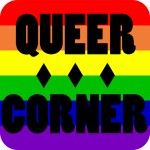Queer Corner: Bears

A few years ago, a friend and I were in Yellowstone National Park trying to stay warm and busy on a gross, wet day, when a woman rode by our campsite in her golf cart and yelled, “At least it’s good snugglin’ weather!” Needless to say we burst into giggles at the situation.
I always think of this story when it is as cold as it has been lately, but both snuggling and Yellowstone make me think of one thing: bears.
It reminds me of the animal with the same name, sure, but it also reminds me of a specific type of male, a subset, if you will, within the Lesbian, Gay, Bisexual, Transgender, Queer/Questioning (LGBTQ) community, called a bear.
The men who identify as bears do so because of their likeness with certain attributes of the animal: being hairy, fat, muscled and powerful. Imagine a lumberjack. There is your basic archetype for a gay bear. The community started identifying as such as a reaction to the mainstream gay rights movement, where a certain type of gay man: young, skinny and fit, clean-shaven, effeminate, was becoming synonymous with what all gay men were.
Thanks to gay biker clubs, men in leather communities, blue-collar and rural gay men, the bear movement began in the 1980s and has been widely accepted since by men who did not fit a certain gay stereotype.
Having a beard or a motorcycle doesn’t automatically qualify someone to identify as a bear; the identity is about an understanding of masculinity and body image that are oftentimes thought of as separate from one being gay.
The community has a lot of ties to the leather and bondage, discipline/domination, submission/sadism, masochism (BDSM) community, where a trademark identity is a large, beefy man in a leather chest harness.
That does not mean that they are the same community, however, since among other differences the BDSM community has a large straight population, whereas being a bear is contingent on being queer as well.
The community is a subgrouping of the larger LGBTQ community and has direct ties to it.
The bear community has individually developed some of its own group identifiers, which is more than many other subgroups have done.
We queers love our flags and symbols, and bears are no exception. The International Bear Brotherhood Flag (pretty official, huh?) is striped like the rainbow flag, but there is a black paw print on a corner and the colors of the flag represent all of the possible skin and/or hair colors in the world. The typical greeting between friendly bears (or to indicate that someone is attractive) is “Woof!”
There is also a “bear code” used to classify members of the community by both their personal attributes and the things they are into or are willing to try sexually. B6 c+ e f- g+ k q++ r+ s- t+ w might not mean anything to you now, but to someone in the know that code indicates that the person is into camping and the outdoors, is open to kink during sex, is tall, and has a thick, bushy beard, among other things.
There are online code generators where you can see all of the different permutations with descriptions.
The bear community has come under scrutiny because of differences of opinions in groups of bears about who exactly can belong to the group (it’s almost like a secret club).
Men who have too much body fat (Chubs) are sometimes thought of as not belonging since there is an emphasis on bulky muscles and body fat, not just one extreme. In addition, there does not seem to be a lot of racial diversity within the community, given that Western Europeans tend to fit the desired characteristics of the imagined bear most often.
Yet even with these criticisms, the bear community continues to advocate for inclusion of diverse members. It thrives on a celebration of the masculine body in whatever shape it takes, showing that there is not simply one way of being gay or attractive.
The LGBTQ community at large, like any community, has its divisions and disagreements, and the bear community has been a way for many people to accept the community, advocating for further diversity and acceptance.
If you are looking for an example of bear life on campus, you might have to look somewhere else – as you could probably guess Colgate doesn’t have a real burgeoning bear scene. I guess that just means that I will have to wait until graduation before donning my chaps and an obnoxious amount of flannel. With school just starting, take an example from the community – play rough but be gentle – and maybe woofing at a hottie on Broad Street is your best option.








